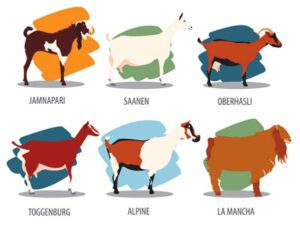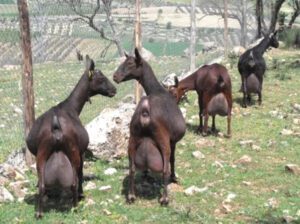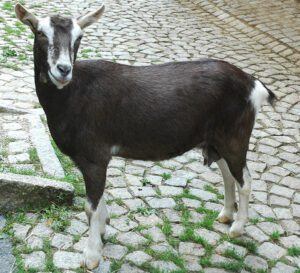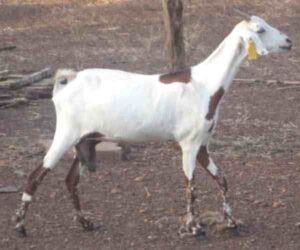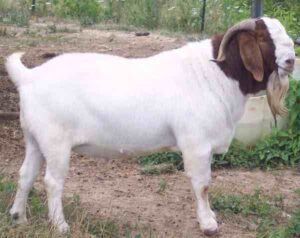Angora goat is a very common and popular breed of domestic goat which was originated from a district named ‘Angora’ near the Himalayan of Asia. Some people says that, the ancient living place of Angora goat was China.
The Angora goat is named after Ankara, Turkey, which was historically known as Angora. They are very beautiful and mainly raised by the farmers for their mohair production.
They produce bright and very high quality hair. Their meat and milk production is not profitable enough like other goat breeds.
Angora goats generally are of small size, hardy, long-lived, requires minimal care and facilities. And they are relatively odor-free. This goat is available in almost all countries around the world.
In the year of 1554, a pair of Angora was imported to Europe by Charles V. Spanish Government imported this breed to their country in 1765. In 1785 France imported a large number of these goats. South Africa imported this breed in 1838. There is a great production unit of Angoras in the Texas of United States.
Here we are listing full breed information of the Angora goat. Characteristics, feeding, breeding, housing and care of Angora goats are described below.
Characteristics
Angora goats are very smaller sized animal than other milk and meat goat breeds. Even they are also smaller than some common sheep breeds. An adult Angora buck generally weights about 180-225 pounds. And adult female goat weights about 100-110 pounds.
These goats are of various colors including shades of red through tans and browns, gray through black and combinations of these colors with white and many more color.
Male goats produce up to 12 pounds of skirted fiber and female goat produce about 8 pounds of skirted fiber. Both adult Angora bucks and does have a pair of horns curved to back.
Their ears are pendulous, legs are short and small sized, tails are short and held high, back is straight and very strong, their pelvis has s slight downward tilt but not extreme.
The body of this goat is deep. There is a good width between good spring of rib and the front legs. Their skin is loose and pliable. They produces long sized bright hair. Their hair lengths about 13-25 cm.
The breed is not suitable for commercial meat and milk production. Milk of Angora goat contains about 5.7% fat. The does generally produce 1-2 kids each time.
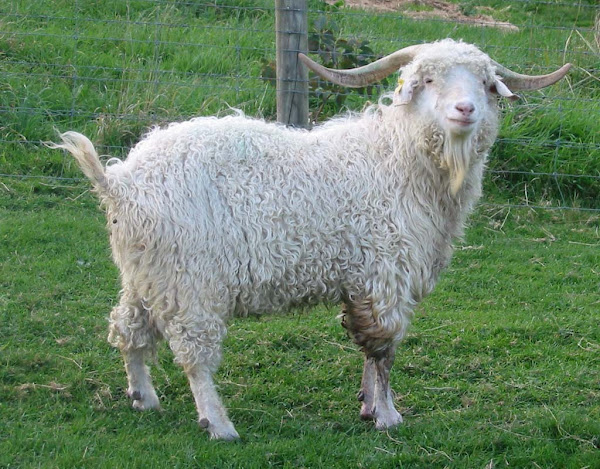
Feeding
Like other goat breeds, Angoras are also browsers and love grazing and eating green grasses, corns, plants etc. They also generally eat a lots of roughage that includes weeds, bark, leaves or woody shrubs.
They hold the tree branches down and eats leaves from there by standing on their hind legs. For commercial hair production from Angora goats they need nutritious food. They also require high quality food for proper growth and maximum production.
The principle nutrition elements of their regular food are minerals, protein, trace elements, energy and vitamins. An ideal food for Angoras should contain about 20% protein.
This types of nutrition is very effective for their growth, gaining moderate body weights, proper production of fiber/hair and reproduction/breeding. Nutritious foods also helps the goats to keep them free from virus and diseases.
You should take care of feeding your goat during pre or post mating/kidding period because the goats need special nutritious food in those time.
In accordance with providing good and nutritious food serve them sufficient clean and fresh water regularly. Fresh water plays an important role for keeping the goats healthy and well productive.
Breeding
Angora bucks become generally larger than the does. A mature buck weights about 180-225 pounds and a doe about 100-110 pounds. In special care and management the bucks for breeding purposes become very strong, powerful and weights up to 225 pounds.
But the nature of this type of bucks become quite and broad. The bucks are the main element of breeding program of goat. Every kids produced from the breeding program contains about 50% genetic characteristics the bucks.
So, you should select strong, healthy and powerful bucks for breeding purposes. Before starting your breeding campaign you should know one thing that ‘Angora bucks generally kept separated from the does except the mating period’.
And one buck can mate with numerous does depending on it’s physical condition. Except mating period, always keep the bucks in separate place and take extra care of it. After completing the breeding program the does become pregnant and produce one or two kids each time.
Housing
In accordance with the fencing of your goat farming area, you need to make a shelter or good house for them to keep your animals free from predators, adverse weather condition and also for good health.
Goats also need house to stay safe at night. Generally Angora goats don’t like wet environment. Wet conditions also make the goats vulnerable to illness. Mostly after shearing and for newly born kids.
Wet condition also damages the quality of their fiber/hair. Goat housing needs good ventilation for avoiding the moisture especially during the winter season.

Tips For Taking Care of Angora Goats
As Angoras are highly hair productive goats, they need some special care and management for producing high quality and bright hair regularly. And it’s very easy to take care of Angora goats. Some basic and essential care of these type of goats are described below.
- Wash the body of your goats occasionally with hand washing detergent or soap.
- Keep the bucks and does separated form each other.
- Always provide the goats good quality and nutritious food. Don’t provide them rotten or dirty food.
- Keep the house neat and clean always. They also like to stay in dry place.
- Try to keep them free from all types internal and external parasites. Use medications for removing parasites if needed.
- Both doe and bucks have a pair of horns. So, keep watching them, so that they can’t harm each other or other animal or even humans.
- Take some extra care to the bucks selected for breeding campaign.
- Always provide them sufficient clean and fresh water.
- Meet the veterinarian as soon as possible if they get affected by any diseases or any health problems.
Review full breed profile of the Angora goat in the table below.
| Breed Name | Angora | |
| Other Name | None | |
| Breed Purpose | Meat, Mohair | |
| Breed Size | Large | |
| Buck | About 82 to 102 kg | |
| Doe | About 45 to 50 kg | |
| Horns | Yes | |
| Climate Tolerance | All Climates | |
| Coat Color | Many color variations | |
| Good for Stall Fed | Not sure | |
| Rarity | Common | |
| Country/Place of Origin | Turkey |

